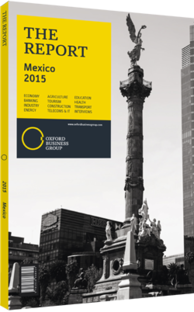Profitable activity: Lending continues to grow, while the ratio of non-performing loans falls
During their annual convention in May 2015, leaders of the Mexican Banking Association (Asociación de Banqueros de México, ABM) said that the industry was doing well. “Mexican banking is experiencing the best credit growth cycle in its history,” Luis Robles Miaja, president of the ABM, said, adding that “credit has been growing at a rate 3.7 times faster than GDP over the last 11 years”. The ABM said lending to all sectors had expanded in the first quarter of 2015, while non-performing loans (NPLs) had fallen to 3% of the total. During the first four months of the year total credit to companies (public and private) had increased by 13.6% year-on-year (y-o-y). Credit to private sector companies was up by 10.7%, and credit to small and medium-sized enterprises grew 10.6%. Mortgage lending was up by 9.5%, while consumer lending grew 5.9% y-o-y. “Forecasts for GDP growth this year have been reduced and we have to admit we are not satisfied on that count, but at the same time we have to look at the global context which shows Mexico is outperforming when compared to other emerging markets such as Russia, Brazil, or Argentina,” Robles Miaja said.
Expansion
A detailed examination of the credit data confirms the strong underlying credit growth rate. In July 2015, the balance of performing loans to the private sector showed an annual growth rate of 10.7% (7.7% in real terms), up from 10% achieved in the preceding month, according to BBVA Research data. Housing and business loans were reportedly the most dynamic. Consumer loans were up by a lower 6.7% (3.9% in real terms). Within the consumer lending segment all components recorded some degree of improvement. Personal loans and consumer durable loans grew by 3.3% and 10.7%, respectively, with the latter increase being mostly driven by a 7.5% growth in auto loans. Growth of payroll loans was recorded at 19.9%, slightly down with respect to the previous month. Credit card lending was up to 2% growth in nominal annual terms. Consumer lending has traditionally had the highest proportion of NPLs – they stood at 4.7%. With relatively high interest rates, consumer lending has been seen as profitable but has posed challenges.
Private Sector
One of the most profitable bank activities is lending to the private sector. According to BBVA Research, the balance of performing loans to private sector companies was up by 12.5% in nominal terms in July 2015 (+9.5% in real terms). Within this, lending to companies in the service sector (52.3% of the total business lending portfolio) grew by 10.4%. Lending to construction companies (19.3% of the portfolio) grew 15.4%, while lending to mining companies (only 0.6% of the portfolio) shrunk by 0.5%. This in part reflected base effects, since there had been a surge in lending to the mining industry the previous months. Lending to manufacturing firms was particularly strong, showing a 23.9% y-o-y gain in nominal terms. Mortgage lending also grew. Housing credit was up by 10.3% in annual nominal terms (7.1% in real terms) in April 2015. This category is composed of two segments. Lending to the social housing sector (14.8% of the total portfolio) grew by 0.1% y-o-y, while the middle-income and residential segment (85.2% of the portfolio) rose by 12.3% y-o-y. After financial difficulties in 2013-14, the outlook for the housing sector is widely seen as improving. On the longer term there are also optimistic assessments of the potential for growth at the low-income end of the housing market. According to the Inter-American Development Bank, the housing market for those “at the base of the pyramid” (defined as earning below $10 a day) grew by 25% in the decade to 2010 to a total value of $40bn annually (defined to include mortgages, rent, construction and self-construction).
Despite these numbers, some struck a more cautious note. Pedro Latapí, chief operating officer at HR Ratings, told OBG, “It is hard to see strong growth in bank lending in the consumption or even commercial sectors [in 2015]. Activity is more likely to pick up in infrastructure or in lending to state and municipal governments. Infrastructure lending is in fashion, and despite fiscal austerity many projects are still going ahead.”
You have reached the limit of premium articles you can view for free.
Choose from the options below to purchase print or digital editions of our Reports. You can also purchase a website subscription giving you unlimited access to all of our Reports online for 12 months.
If you have already purchased this Report or have a website subscription, please login to continue.

